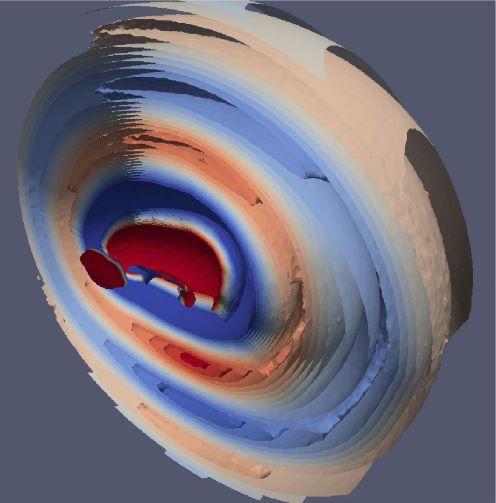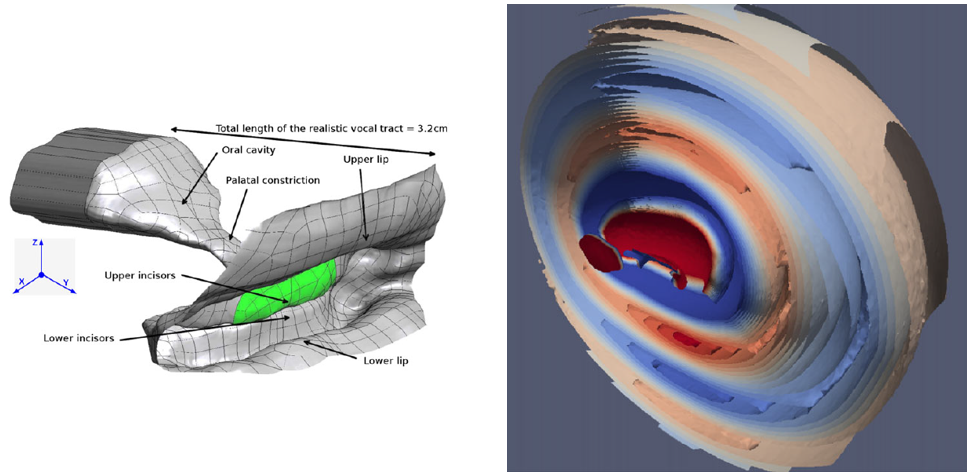Computational aeroacoustics to identify sound sources in the generation of sibilant /s/

The physics of the vocal apparatus are surprisingly complex and involve many different phenomena. Yet in recent times numerical methods have revealed as a very powerful tool for the realistic 3D simulation of voice. Numerical methods not only allow one to visualize how sounds are generated and propagated, but also to produce and listen to them. In this work, we address the simulation of sibilant fricative /s/ resorting to super computer facilities. The sound /s/ is generated when the turbulent jet in the narrow channel between the tongue blade and the hard palate is deflected downwards through the space between the upper and lower incisors and then impinges the space between the lower incisors and the lower lip. The flow eddies in that region become a source of direct aerodynamic sound, which is also diffracted by the speech articulators and radiated outwards. The simulation of an /s/ is herein addressed by means of an acoustic analogy which implies solving the incompressible, non-linear, Navier-Stokes equations for the flow dynamics and the wave equation for the acoustic field. A large-scale computation of the aeroacoustics of /s/ has been performed for a realistic vocal tract geometry to that purpose. The research has been conducted in collaboration with the CIMNE center from the UPC and the EGI, UMR CNRS in Grenoble, France.
Link: https://onlinelibrary.wiley.com/doi/10.1002/cnm.3153
Arnau Pont, Oriol Guasch, Joan Baiges, Ramon Codina and Annemie Van Hirtum (2019), "Computational aeroacoustics to identify sound sources in the generation of sibilant /s/". International Journal for Numerical Methods in Biomedical Engineering, 35 (1), e3153.
This work was supported by the Geniovox (Generación computacional de voz expresiva) project, TEC2016-81107-P, the EUNISON (Extensive Unified-Domain Simulation of the Human Voice) project, EU-FET no 308874.

Figure. Vocal tract geometry and emitted front waves.